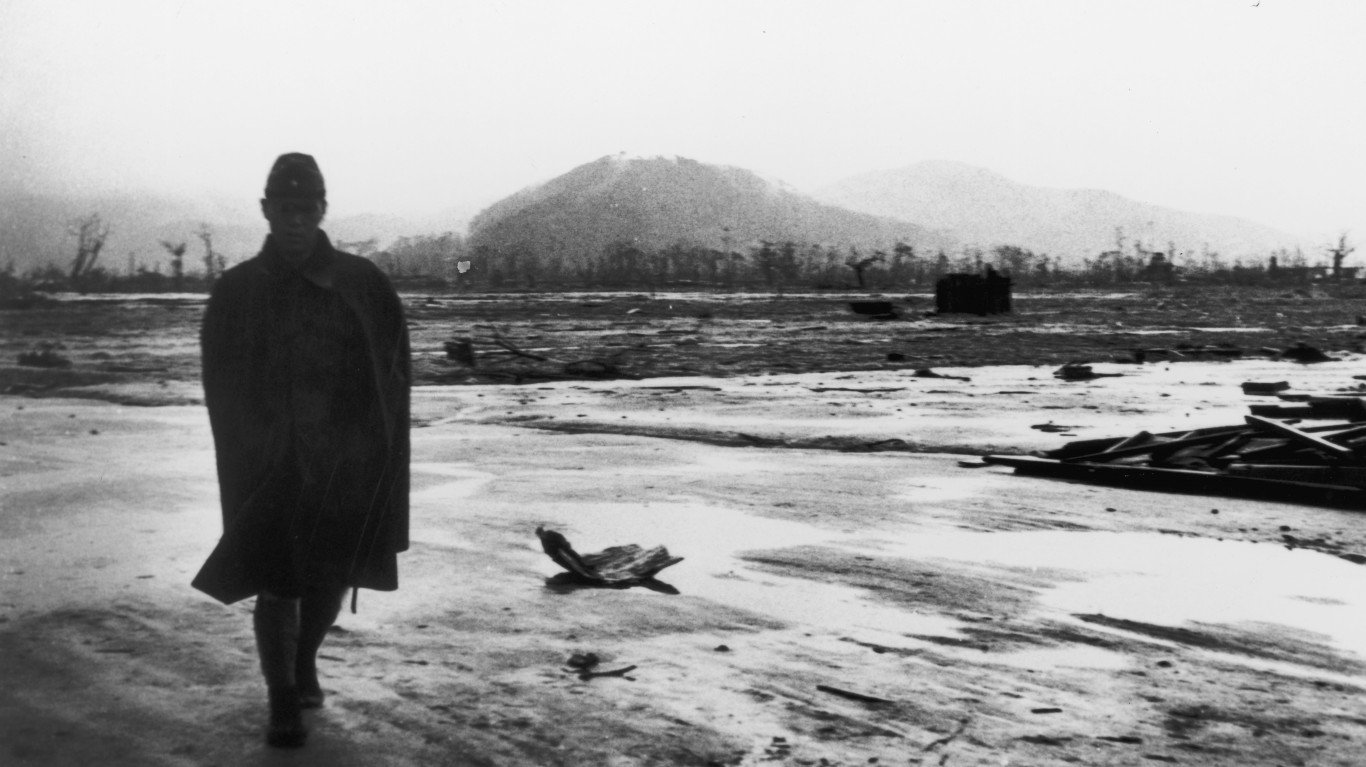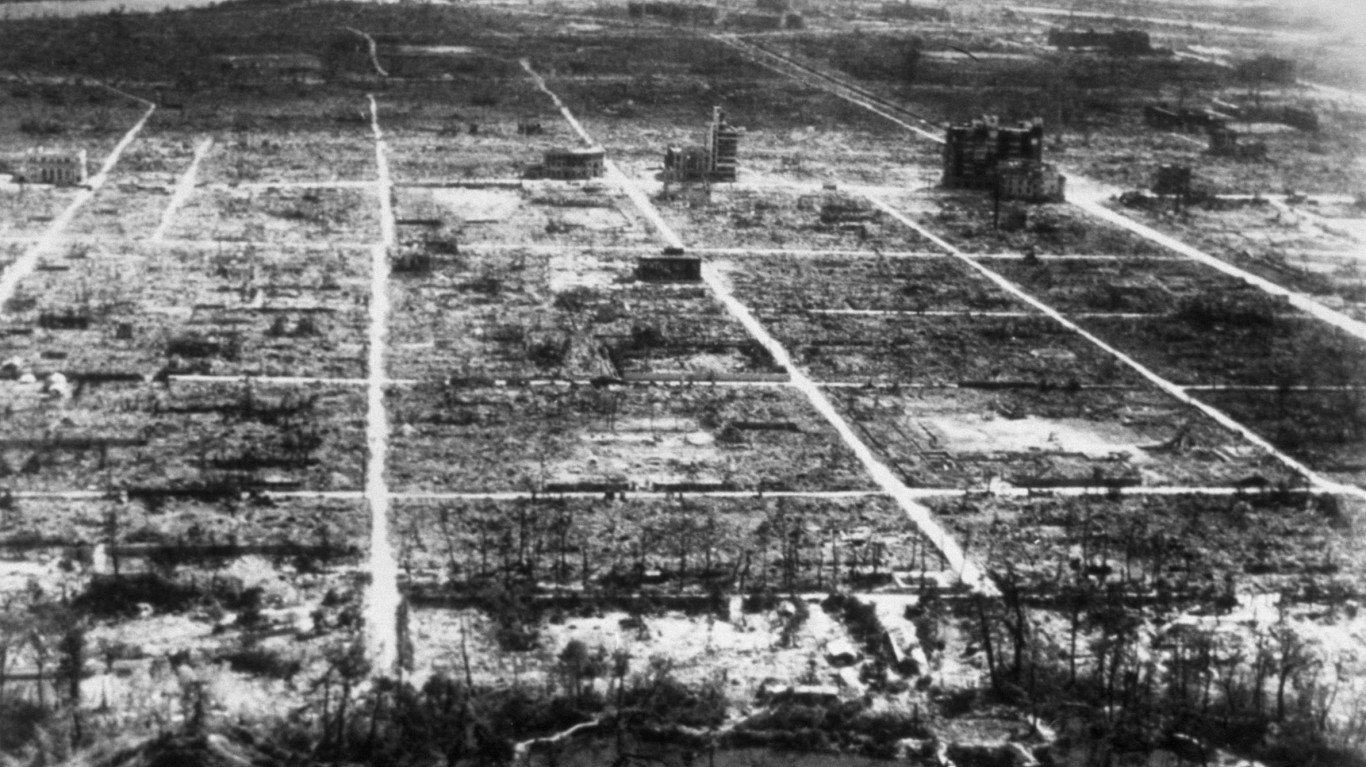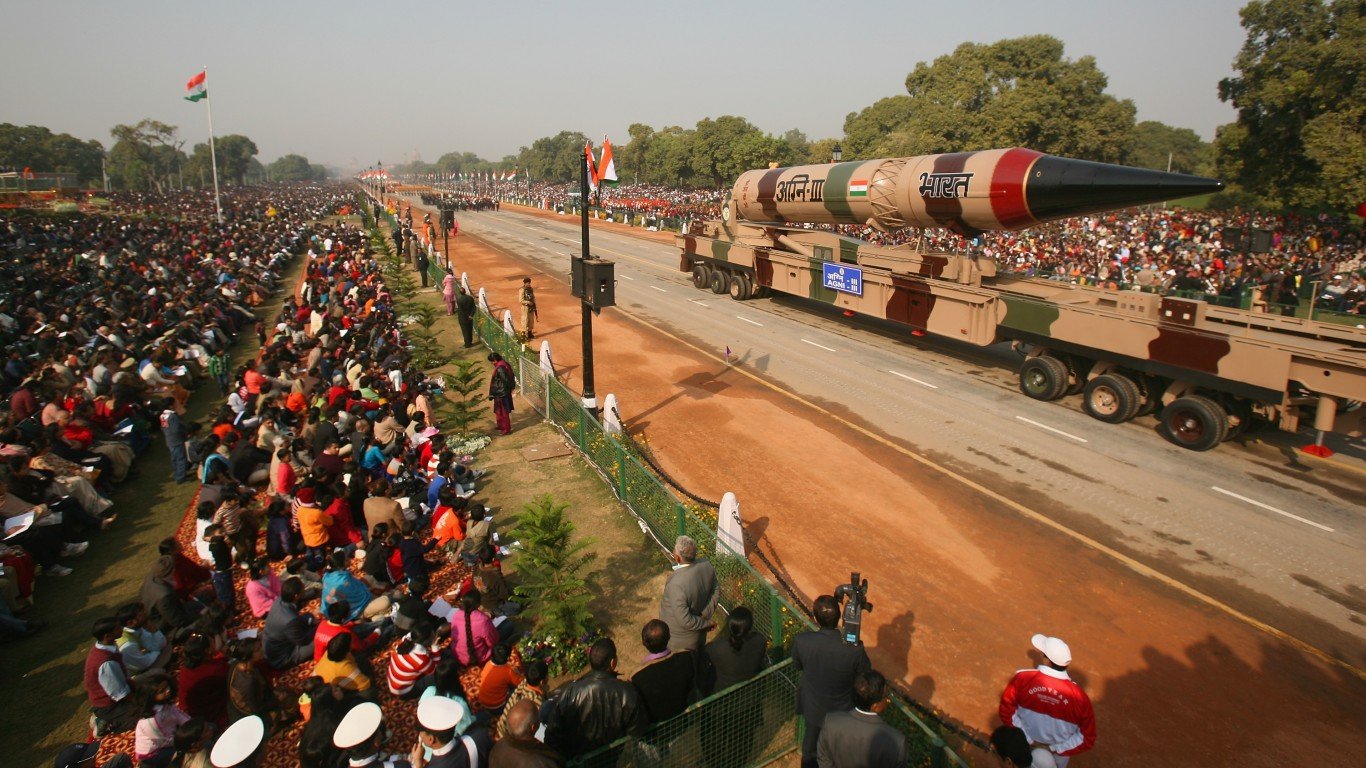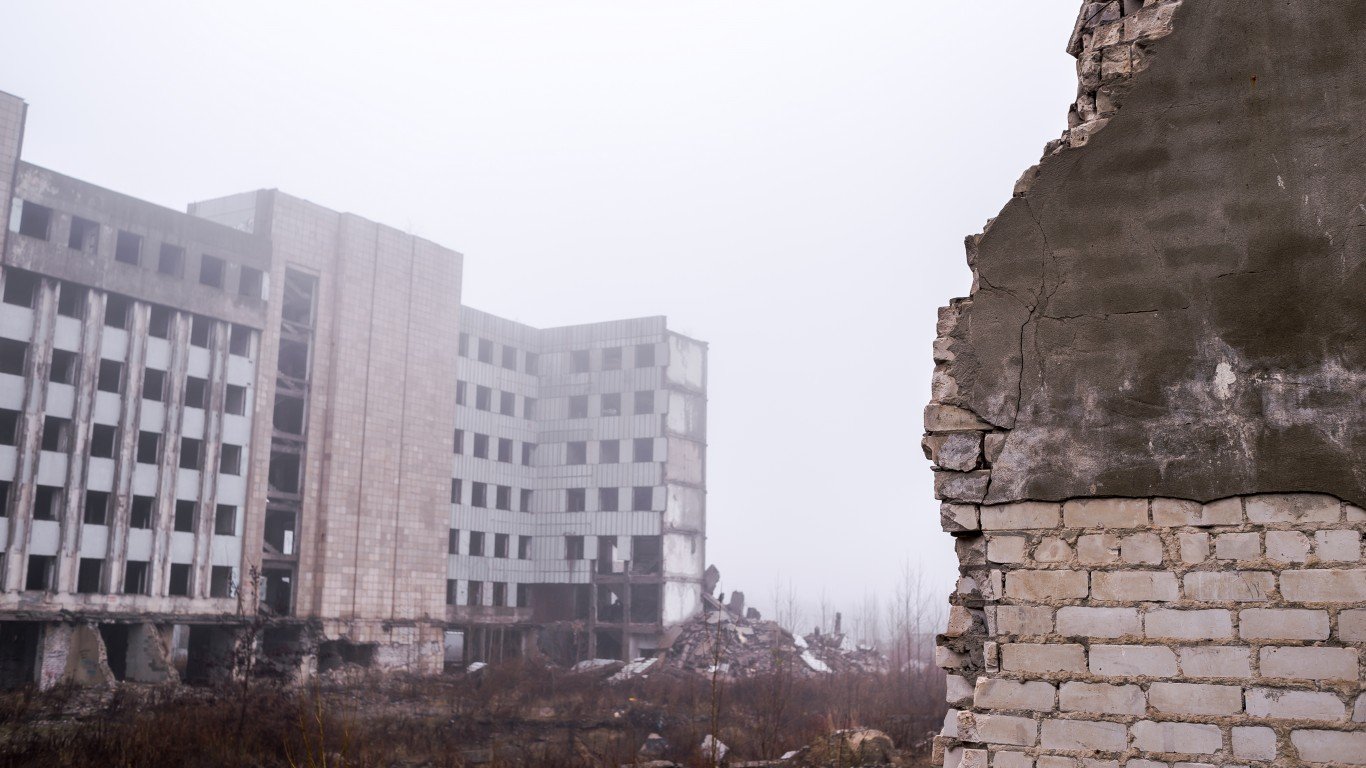
7. Moderate damage zone
In the moderate damage zone, there is significant building damage, rubble, downed utility lines and poles, overturned automobiles, fires, and serious injuries.

6. Severe damage zone
This is the most catastrophic of the damage scenarios. Buildings collapse, radiation levels are high, and survivors are unlikely.

5. Electromagnetic pulse
A nuclear weapon exploded at very high altitude may not produce the previously mentioned destruction but it produces intense gamma rays that knock electrons out of atoms. When the blast occurs at high altitude, this effect may reach hundreds of miles. As they gyrate in the Earth’s magnetic field, the electrons generate an extreme pulse of radio waves. This is known as an electromagnetic pulse. A single large weapon detonated 200 miles over the central United States could blanket the entire country with an electromagnetic pulse intense enough to damage computers, communication systems, and other electronic devices.

4. Limited nuclear war
Experts have pointed to the ongoing conflict between nuclear powers Pakistan and India as an example of a possible limited nuclear-war scenario. If India and Pakistan use 100 strategic weapons to attack urban centers each, fatalities could reach 50 million to 125 million people.
Nuclear-ignited fires could generate smoke that will rise into the upper troposphere, then into the stratosphere, where it will spread globally within weeks. Surface sunlight could decline by as much as 35%, cooling the global surface and reducing precipitation by as much as 30%. Land productivity would drop up to 30%. A mass starvation event is possible as well as other collateral disasters. Recovery would take more than 10 years.

3. All-out nuclear war
In an all-out war, cities worldwide would be targeted with multiple weapons, and lethal fallout would cover much of the United States. Survivors could avoid fatal radiation exposure only when sheltered with adequate food, water, and medical supplies. Despite this precaution, millions would be exposed to radiation high enough to cause lowered disease resistance and greater incidence of fatal cancer. Diminished disease resistance could lead to death from common infections because the population would be deprived of adequate medical facilities. The spread of diseases from contaminated water supplies, inadequate sanitary facilities, and lack of medicines will kill millions more.





